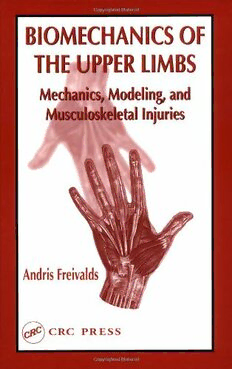
Biomechanics of the Upper Limbs: Mechanics, Modeling, and Musculoskeletal Injuries PDF
625 Pages·2004·5.248 MB·English
Most books are stored in the elastic cloud where traffic is expensive. For this reason, we have a limit on daily download.
Preview Biomechanics of the Upper Limbs: Mechanics, Modeling, and Musculoskeletal Injuries
Description:
The repetitive tasks of various forms of manual work can lead to cumulative trauma disorders, increasing staff burn-out rates and the number of sick-days taken by employees. In addition, interest in upper extremity musculoskeletal disorders has grown as the service sector has claimed a larger share of the workforce. These factors introduce the need for an up-to-date text that combines basic biomechanics with practical bioengineering issues. Biomechanics of the Upper Limbs: Mechanics, Modeling, and Musculoskeletal Injuries is an engineering oriented book focusing on upper extremity musculoskeletal disorders, as opposed to the more general introductions to cumulative trauma disorders and medical management related books. It covers musculoskeletal components of the upper extremities, their models, and the measurement and prediction of injury potential. Students and professionals will find it provides an excellent basic grounding in the subject.Topics include:A basic introduction to biomechanical principlesGross structure of the musculoskeletal system, including bone and soft tissueOrganization of muscles and muscle anatomy, types of fibers, contractile theories, and muscle receptorsModeling of muscle mechanicsModels of the upper limbsTypes of musculoskeletal disorders and the scientific evidence for risk factors, as well as epidemiologyInstrumentation for motion, pressure, force and nerve conduction measurements, and electromyographyJob and worksite analysisHand toolsOffice environment seating and computer devices
See more
The list of books you might like
Most books are stored in the elastic cloud where traffic is expensive. For this reason, we have a limit on daily download.
